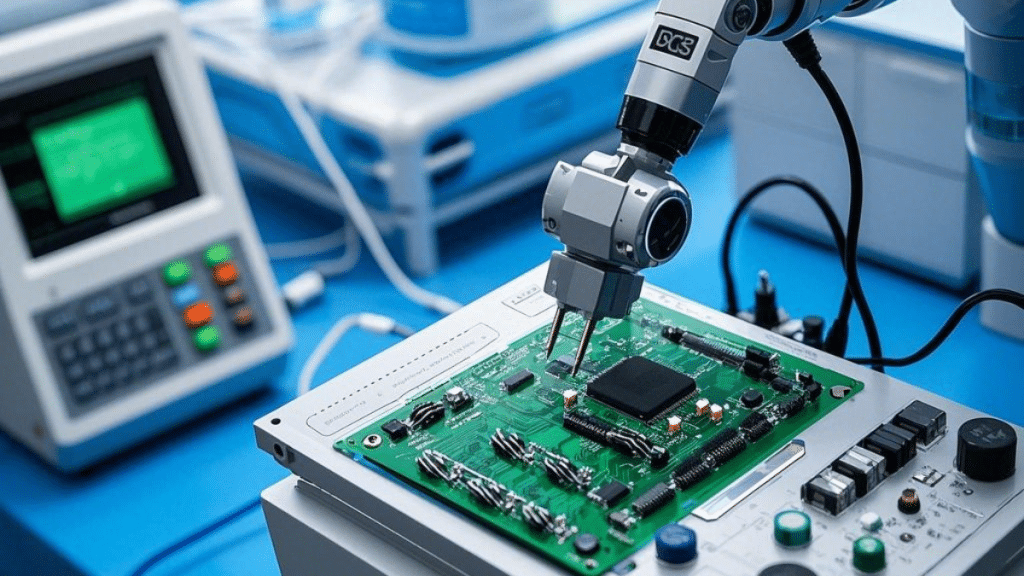Behind every life-saving medical device, from sophisticated imaging systems to tiny implantable sensors, lies a critical yet often unseen component: the medical Printed Circuit Board (PCB). These intricate networks of conductive pathways and electronic components form the very nervous system of modern healthcare technology, enabling the functionality, reliability, and miniaturization demanded by this critical field. Unlike PCBs found in consumer electronics, medical PCBs face stringent requirements, demanding exceptional precision, unwavering reliability, and adherence to rigorous regulatory standards.
The unique demands of the medical industry shape every aspect of medical PCB design and manufacturing. Patient safety is paramount, requiring materials that are biocompatible, durable, and capable of withstanding sterilization processes. High reliability is non-negotiable; a malfunction in a medical device can have severe consequences. This necessitates meticulous design, rigorous testing, and the use of high-quality components and manufacturing processes. Furthermore, the trend towards smaller, more portable, and implantable devices drives the need for high-density interconnect (HDI) PCBs and innovative packaging solutions.
Precision and Reliability: Cornerstones of Medical PCB Design
Designing medical PCBs requires a deep understanding of both electronics and the specific application. For instance, PCBs used in diagnostic imaging equipment like MRI or CT scanners must handle high-speed data transmission with minimal noise to ensure clear and accurate images. Implantable devices, on the other hand, demand ultra-low power consumption and biocompatible materials that can safely reside within the human body for extended periods.
Layout is critical. Medical PCBs often incorporate features like redundant traces and shielding to minimize electromagnetic interference (EMI) and ensure signal integrity. Traceability is also paramount, requiring detailed documentation of materials, manufacturing processes, and testing results for regulatory compliance.
Material Matters: Biocompatibility and Durability
The materials used in medical PCBs are carefully selected for their biocompatibility, ability to withstand repeated sterilization cycles (using methods like autoclaving or chemical sterilization), and long-term reliability. Common substrate materials include FR-4, polyimide, and specialized high-performance laminates. The choice of surface finishes, such as gold or ENIG (Electroless Nickel Immersion Gold), is crucial for corrosion resistance and reliable solderability, ensuring robust connections for components.
The Drive for Miniaturization and High Density
The increasing demand for minimally invasive procedures, portable diagnostic tools, and advanced implantable devices is fueling the need for smaller and more densely populated medical PCBs. HDI technology, with its finer lines, smaller vias, and tighter component placement, enables the creation of compact and powerful medical devices. Techniques like microvia drilling, sequential lamination, and fine-pitch component assembly are essential for achieving the required miniaturization.
In certain applications, particularly those involving complex integrated circuits with a high number of input/output connections, wire bonding might be employed to electrically connect the chip to the substrate pads within a packaged component before it is surface mounted onto the PCB.
Navigating the Regulatory Landscape
Medical device manufacturing is a highly regulated industry, with stringent standards imposed by agencies like the FDA in the United States and the European Medicines Agency (EMA) in Europe. Medical PCB manufacturers must adhere to these regulations, including ISO 13485, which outlines the requirements for a quality management system specific to the medical device industry. Compliance involves rigorous quality control procedures, comprehensive documentation, and traceability throughout the entire manufacturing process.
Innovation on the Circuit Board: Shaping the Future of Healthcare
Medical PCBs are at the forefront of healthcare innovation, enabling groundbreaking advancements in diagnostics, treatment, and monitoring. From flexible PCBs used in wearable health trackers to complex multi-layer boards powering robotic surgery systems, the evolution of medical PCBs directly contributes to improved patient outcomes and a more efficient healthcare system.
As medical technology continues to advance, the demands on medical PCBs will only intensify. We can expect to see further innovations in materials, design techniques, and manufacturing processes to meet the challenges of next-generation medical devices. These unseen foundations are, and will continue to be, instrumental in powering the future of healthcare, one meticulously designed circuit board at a time.
